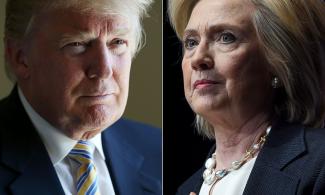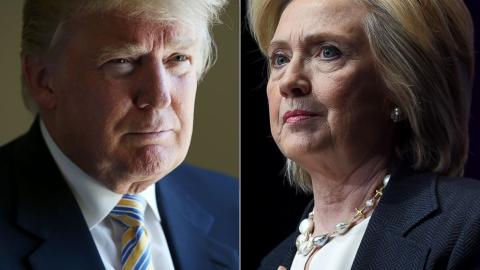
The contest has been divisive, with Mrs. Clinton’s optimistic message of unity and progress clashing with Mr. Trump’s pessimistic, nationalist and populist rhetoric.
Millions of Americans are casting their votes on Tuesday in an election that will decide whether Hillary Clinton or Donald Trump becomes the next U.S. president.
The contest has been divisive, with Mrs. Clinton’s optimistic message of unity and progress clashing with Mr. Trump’s pessimistic, nationalist and populist rhetoric.
Both candidates generated controversy throughout the election cycle. Mr. Trump regularly made inflammatory remarks about women, immigrants, and Muslims, while Mrs. Clinton faced FBI investigation over the management of her emails while she served as Secretary of State.
Mrs. Clinton and Mr. Trump made their final appeals to voters last night in the battleground states of Pennsylvania, North Carolina, New Hampshire, and Michigan.
“Tomorrow we face the test of our time. What will we vote for – not just against? Every issue you care about is at stake,” Mrs. Clinton said to a crowd in Philadelphia, Pennsylvania.
“Let’s make history together.”
Meanwhile, in Manchester, New Hampshire, Mr. Trump asked for all Americans, no matter their party affiliation, to vote for him, as the country is “desperately in need of change.”
But as he has done throughout most of the election, Mr. Trump accused the election of being rigged.
“It’s a rigged, rigged system. And now it’s up to the American people to deliver the justice we deserve at the ballot box tomorrow,” he said in Raleigh, North Carolina.
Keys to the election
In the American electoral system, each state is given a designated number of electors based on its population. The winner of each state wins all of that state’s electoral votes, and at the end of the contest, whoever has the most electoral votes is declared the winner. Therefore, one candidate could win more states than the other but still lose the contest due to the small populations and number of electoral votes of those states. Similarly, a candidate could win the majority of popular votes in the country but still lose the election by not winning enough electoral votes, which happened in the 2000 race between George W. Bush and Al Gore.
Certain states tend to vote for a single party in each election. For example, New York, California, Illinois, and Massachusetts almost certainly will go to Clinton, while Trump will likely win Texas, Louisiana, Alabama, and Arkansas.
The key to winning, therefore, is winning in so-called “swing states,” that is, states that tend to alternate between voting for Democrats and Republicans.
Ohio, Pennsylvania, Florida, Michigan, New Hampshire, North Carolina, Arizona and Nevada are the key swing states and play a large role in deciding the next president.
As at the time of reporting, pollsters have given a slight edge to Mrs. Clinton in the states of North Carolina, Florida, Nevada, and Pennsylvania, while giving Arizona and Ohio to Mr. Trump.
The latest polls show Mrs. Clinton winning the contest overall, but time will tell who emerges as the next president of the United States.
To stay up to date on the election, tune in to SaharaReporters’ live coverage of the race, featuring commentary by Africans on what the election means for the U.S., Africa, and the world at large.
